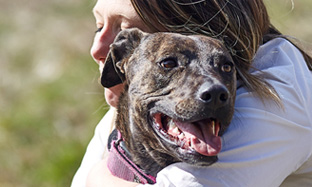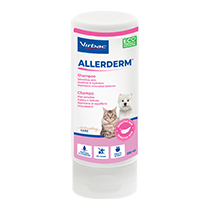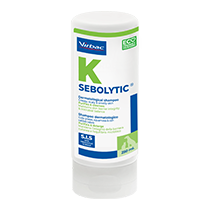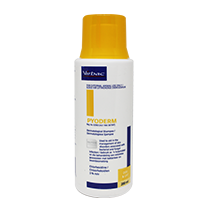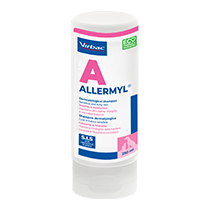
Itching in dogs
What is pruritus?
Pruritus (itching) is an unpleasant sensation that is characterised by scratching, licking, biting, chewing, and rubbing. It is caused by chemical reactions that occur in the skin that stimulate the nerves, causing the brain to feel an itch. Pruritus and subsequent scratching or biting causes the skin to become pink, inflamed, and damaged.
What causes pruritus?
A variety of common skin conditions may cause pruritus:
- Fleas, mites, lice, and ticks.
- An airborne allergen that is inhaled or absorbed across the skin, such as pollen or house dust.
- Food allergies.
- Contact allergies from touching plants, grass, and leaves.
- Bacterial and yeast infections of the skin.
Sometimes, more than one of these can occur at the same time.
How is pruritus affecting your dog?
If your dog has pruritus, you will see some (or all) of the following signs:
- Scratching or biting.
- Licking for long periods of time, especially the feet.
- Reddening of the skin.
- Excessive grooming in cats.
- Hair loss.
- Skin lesions.
These signs can lead to obvious pain and discomfort.
Certain breeds are more at risk of allergies, e.g. the West Highland White Terrier (left); atopic dermatitis causes pink, inflamed, and itchy skin (right).
Diagnosis
Your veterinarian may want to perform a few diagnostic tests to determine the cause of pruritus. Tests may include:
- A complete and thorough medical history.
- A thorough physical examination.
- Skin scrapings to rule out mange mites and other parasites.
- Fungal cultures of hair to rule out dermatophytes (ringworm).
- Sampling of bacteria from the skin surface and examination under a microscope.
Therapy
The key to relieving your dog’s pruritus is to identify and treat the underlying cause of the itch. Often, long-term antibiotic treatment is needed to treat the underlying cause of pruritus. The most common antibiotic used in skin cases such as this is a cephalexin-based tablet.
To help relieve the itching, your veterinarian may recommend anti-inflammatories, antihistamines, fatty-acid supplements, and soothing veterinary shampoos such as ALLERCALM™ SHAMPOO.
To ensure proper healing of your dog’s skin, it is necessary to follow your veterinarian’s instructions exactly. This means it is vital to ensure the correct dose, frequency, and duration of treatment recommended by your veterinarian, and to make sure you return to your vet for rechecks as instructed. Only your veterinarian can determine the right time to stop treatment. Compliance is critical to successfully treating your dog’s pruritus.
Handy hint: To ensure complete healing, follow all your vet’s treatment instructions. If treatment is stopped too early, quick relapse is possible.
How can I prevent pruritus from happening again?
To ensure the pruritus problem is resolved and to keep your dog’s coat healthy, it is important not only to administer all medications as instructed, but you should also:
- Keep your dog’s coat clean and properly groomed.
- Observe your dog closely for fleas. Consult with your veterinarian to establish a complete flea-control programme.
- Observe your dog for the appearance of new rashes, areas of hair loss, or other new lesions that may indicate secondary problems like pyoderma (a bacterial infection of the skin) that could require additional medication.

